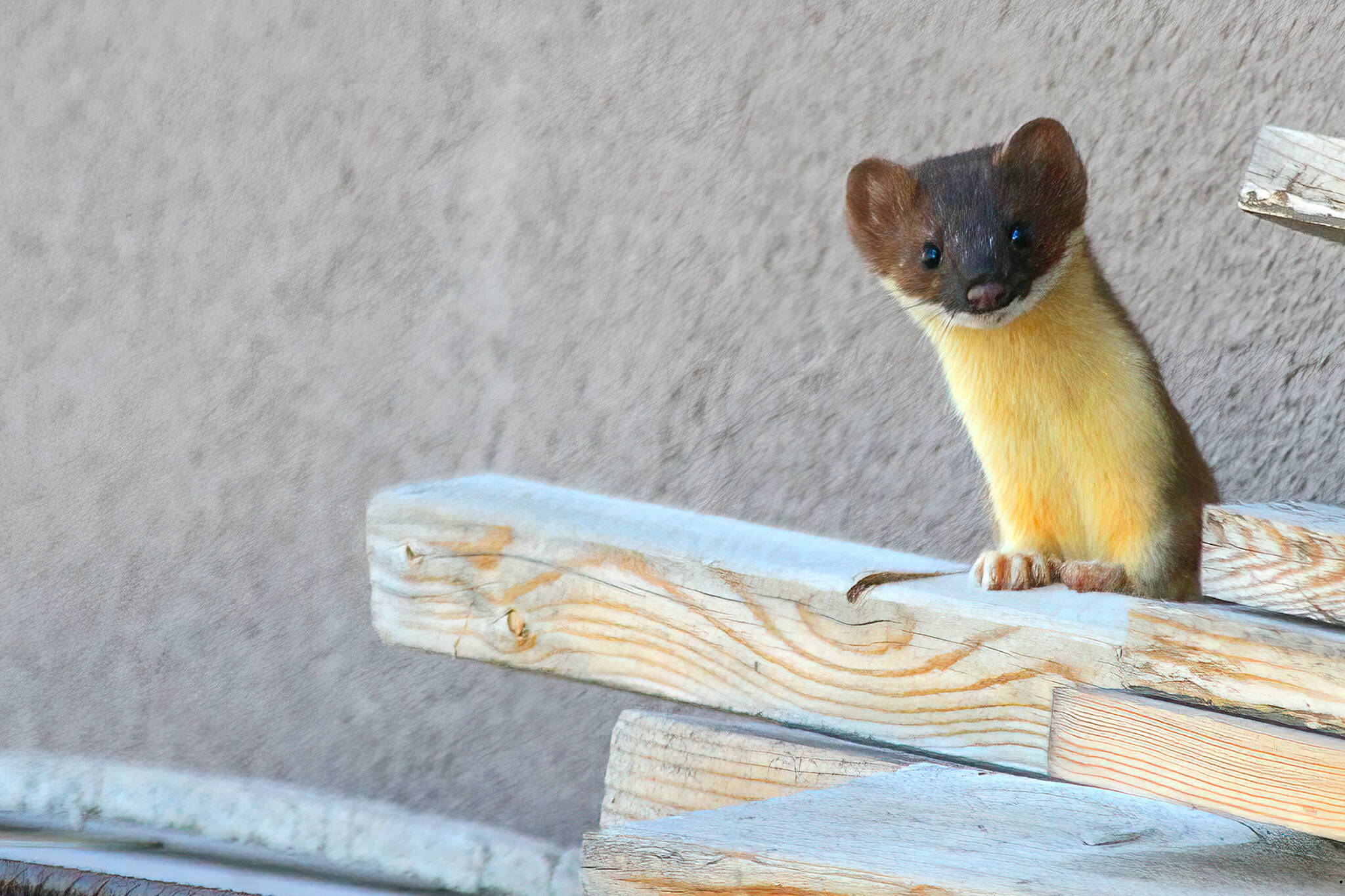By Mary F. Willson
This taxonomic family (Mustelidae) of carnivores is familiar to Juneau folks in the form of weasels, wolverines, martens, mink, fishers and otters. Mustelids are a species-rich family, with 50 or 60 or 70 species, depending on what source you read. They originated over 20 million years ago from a wolf-like ancestor and have evolved into a variety of ecological niches. They are distributed naturally over all the continents except Australia and Antarctica.
Mustelids range in size from the tiny least weasel, weighing up to about 250 grams (8.8 ounces) to the sea otter, weighing up to forty-five kilos (99 pounds) or occasionally more. A long-extinct mustelid is estimated to have achieved the size of a black bear or a jaguar, the biggest mustelid on record. Known as Megalictis, it once roamed the North American plains and probably preyed on many kinds of animals.
Members of this family generally have rather elongate bodies, relatively short legs, and short muzzles. Most are highly carnivorous, typically pursuing rodents, fish, and other small critters, and most are solitary predators, but some are quite social. Certain members of the family occupy diverse, fairly specialized ecological niches — a few very social, some very arboreal, others fossorial (burrowing), some highly aquatic. It would be tidy and convenient if such specialized habits were associated with branches of the evolutionary tree of mustelid radiation (social species on one branch, fossorial ones on another, etc.). But that’s not generally the case—those habits have often arisen independently on the several known branches.
The long, slender body form of weasels is well-suited for these predators to pursue voles and mice into narrow tunnels and tight spaces. Similarly, that body shape enabled the North American black-footed ferret to chase prairie dogs down into their burrows. But that’s a sad story: thanks to habitat destruction and poisoning programs by uncaring agriculturalists, prairie dog colonies are few and scattered; the ferrets were declared extinct in the wild; captive-raised ferrets have been reintroduced in several places.
American badgers originated early in mustelid evolution, in a lineage distinct from other extant mustelids, and are quintessential burrowers. Much heftier than the weasels and ferrets, they have powerful forelegs with strong claws that enable them to dig deep and extensive burrow systems. Largely solitary, they are major predators of rodents and other small creatures of the prairies, but they too are far less common than they were.
The European badger is not closely related to the American badger, despite the shared name. A mighty burrower, it is quite social, living in multi-family, complex burrow systems. It’s a predator of worms, insects, hedgehogs and other small vertebrates, but also eats some tubers and roots.
Honey badgers (or ratels) of Africa and Asia evolved early in mustelid evolution and are not closely related to any other mustelids (including other “badgers”). They are typically solitary predators, fiercely chomping up all sorts of prey and raiding bee nests for honey, and they are good burrowers.
Arboreal species tend to be more omnivorous than the others, often eating lots of fruits in addition to small animals. The tayra of Central and South America is probably related to the martens of North America, but it’s somewhat bigger and longer-legged. It can cavort very capably in the treetops, using its big tail for balance. However, the only one I ever saw was on the ground; it burst from the brush beside a trail, giving me (not previously knowing that such things existed) quite a startling!
Aquatic living is typical of mink and the distantly related otters. These species eat chiefly fish and invertebrates such as crabs and crayfish, in some cases also eating birds’ eggs and nestlings when available. The sea otter is the most aquatic of all, seldom coming ashore. It’s the biggest extant mustelid, with large, webbed hind feet. Its dentition is much modified from the basic carnivore plan—the molars are broad and flattened, made not for cutting but for crushing shelled invertebrates.
Next in size is the giant otter of South America, which is not very closely related to the other otters. It is very social (unlike most but not all other otters), living and hunting in cohesive, extended family groups and defending the family territory with loud choruses. With webbed feet and a muscular tail, it is a strong swimmer. Group members hunt together: fish are the primary prey, but sometimes also taking snakes and small caiman. It is now endangered.
What a varied family—so many variations on a basic body plan!
• Mary F. Willson is a retired professor of ecology.”On the Trails” appears every Wednesday in the Juneau Empire.

